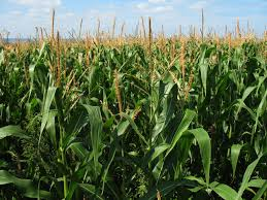(KMAland) — U.S. corn quality at both harvesting and point-of-export is extremely important to overseas buyers and end-users as it helps them make key commodity buying decisions.
For nine years, the U.S. Grains Council has made it a point to provide that information in the form of two reports each year. The Corn Harvest Quality Report gives people a picture of what the corn quality looks like at the first point of sale, while the Corn Export Quality Report gives a picture of corn quality as it’s loaded into shipping containers. Reece Cannady (CAN-ah-dee) is the Manager of Global Trade with the U.S. Grains Council. Cannady shares how the Council is focused on trade servicing and why the Corn Export Quality Report is so valuable to overseas buyers.
“There were tough growing conditions last year and people knew that. It’s no secret. When they’re looking at that, they have a lot of questions immediately. What’s going on? It’s been very wet, what’s going to go on with the crop? And we’re able to provide them with very timely information. Other countries can’t provide that, and that’s a huge piece of value that I think the Grains Council brings to our international buyers, is giving them a heads-up on the kind of quality they can expect out of the U.S. In years like this, where there have been some issues with growing conditions, where can we provide service to these international buyers, and help them to understand exactly what’s coming to their door and exactly what they can expect out of U.S. origin.”
He talks about some of the specifics in each report.
“We do our grade factors; test weight, damage, your heat damage, and BCFM. We’ll look at moisture, which is not a part of grade, but by looking at what moisture the corn is harvested at and what it is exported at, it can tell us a little bit about the quality as well. We also then look at physical factors; whole kernel percentage, horny endosperm, some of the snack food companies care about that around the world, we look at density of the kernel as well as stress cracks. Lastly, we look at mycotoxins as well. We always encourage people to test for mycotoxins. It does give people an idea of the growing conditions in the U.S. and it gives us a pathway to talk about some of the ways we mitigate mycotoxins in the U.S.”
The report is issued in English, Spanish, and even Mandarin. Cannady says that’s to make the information available to as many people as possible.
“People are interested. I think that’s the real bottom line for us having to translate it into so many different languages. There may be a chance for us to translate it into Korean, there’s been a lot of interest in Korea this year, and also into Japanese as the Japanese market has had a lot of interest. I think more than anything it shows that the global interest, the longevity of it, this being our ninth year, people have come to expect it and I don’t think it’s going to go anywhere anytime soon.”
He talks about where to go for more information.
“That’s at www.grains.org. You can find it all on our website, again, the past nine years of not only the harvest report but also the export cargo report is all up there, and if you need anything else, please feel free to reach out to us. We’re here to help you and service our customers in the U.S. and around the world.”


